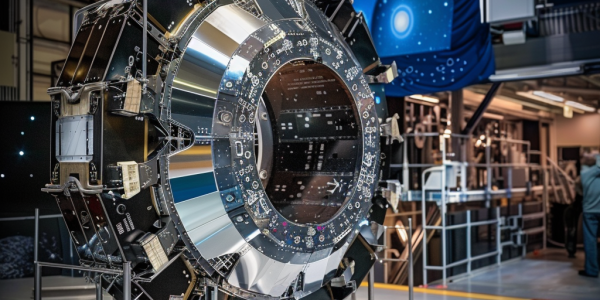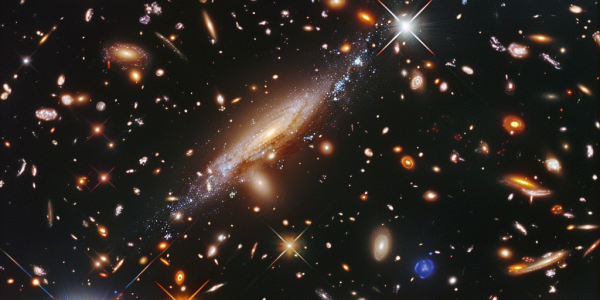December’s Celestial Showcase: Five Planets Visible in the Night Sky
This December, stargazers can enjoy a spectacular sight as five planets—Venus, Jupiter, Saturn, Mars, and Mercury—grace the night sky. With Venus shining brightly in the southwestern sky and Saturn’s stunning rings visible even through small telescopes, this month offers a unique opportunity for astronomy enthusiasts. Jupiter stands out as the brightest planet, while Mars will become more prominent as the month progresses. Don’t miss the chance to witness this celestial event—perfect for both amateur and seasoned sky watchers!
Mars to Disappear Behind the Moon in Rare Daylight Event
Astrophotography enthusiasts, mark your calendars for December 18, 2024! Mars will undergo a lunar occultation, disappearing behind the Moon in a stunning daylight event. This guide offers essential tips for capturing this rare phenomenon, including equipment recommendations and photographic techniques. Don’t miss your chance to witness and photograph this celestial spectacle!
NASA Completes Integration of Roman Space Telescope Payload
NASA has successfully integrated the payload for the Roman Space Telescope, a key milestone in its mission to explore dark energy, dark matter, and exoplanets. With advanced instruments like the Coronagraph and a 300-megapixel Wide Field Instrument, the telescope aims to enhance our understanding of the universe. Scheduled for launch in May 2027, the Roman mission promises groundbreaking discoveries in astrophysics and cosmology.
The Night Sky: A Glimpse into the Past
When we gaze at the night sky, we’re not just seeing stars; we’re looking back in time. The universe, approximately 13.6 billion years old, reveals fascinating insights as light from celestial bodies takes years, even millions of years, to reach us. Discover how the light from the sun, moon, and distant stars connects us to the cosmos’ history and the incredible distances involved in this cosmic journey.
Eclipses to Captivate Skywatchers in 2025
Get ready for an astronomical spectacle in 2025! Skywatchers can look forward to two partial solar eclipses and two total lunar eclipses, with visibility across various regions worldwide. Mark your calendars for March 29 and September 21 for the solar eclipses, and don’t miss the total lunar eclipses on March 13-14 and September 7-8. Prepare to witness these captivating celestial events!
New Theory Suggests Asteroids May Cause Fast Radio Bursts
A new study led by Dang Pham from the University of Toronto suggests that fast radio bursts (FRBs) may be caused by asteroids colliding with neutron stars, rather than the previously believed neutron star collisions. This research, published in the Astrophysical Journal, explores the frequency of interstellar asteroid impacts and their correlation with FRB occurrences, providing fresh insights into these powerful cosmic phenomena.
DOE Allocates Supercomputer Resources for Groundbreaking Cosmic Ray Research
The U.S. Department of Energy has committed significant supercomputer resources to advance computational science, including a groundbreaking project by Drummond Fielding at Cornell University. His research on cosmic ray transport in interstellar turbulence, utilizing the Frontier supercomputer, aims to uncover vital insights into galaxy formation and black hole growth. This initiative underscores the importance of high-performance computing in modern astrophysics and promises to reshape our understanding of the universe.
Study Explores Capture of Rogue Planets and Interstellar Objects in Solar System
A groundbreaking study explores the potential for our Solar System to capture rogue planets and interstellar objects (ISOs), enhancing our understanding of cosmic dynamics. With the Vera Rubin Observatory set to boost detection capabilities, researchers delve into the mechanics of capture points, revealing insights into the history and evolution of our celestial neighborhood.
New Research Uncovers Secrets of Elliptical Galaxy Formation
Recent research from the University of Southampton reveals that massive cosmic collisions around 12 billion years ago were crucial in the formation of elliptical galaxies. This groundbreaking study, published in Nature, highlights how the collision of disc galaxies led to intense star formation, reshaping our understanding of galaxy evolution in the early universe.
Stunning Photograph Captures Comet C/2023 A3 Over Mount Rainier
A stunning photograph of Comet C/2023 A3 setting behind Mount Rainier, captured by photographer Patrick Vallely, showcases the celestial beauty of the Pacific Northwest. Taken on October 13, 2024, the image highlights the vibrant tail of the comet against the iconic mountain, combining nature’s wonders with the marvels of the universe. This breathtaking scene not only captivates astronomy enthusiasts but also emphasizes the importance of environmental conservation in preserving such natural beauty.










